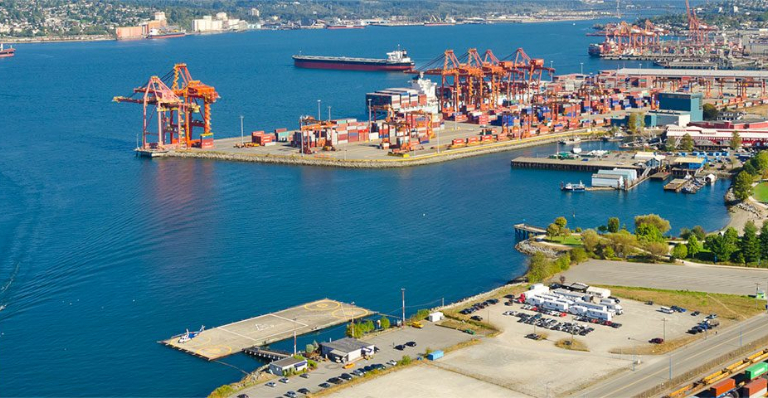This is a big issue for exporters, particularly on the due diligence side, if they’re doing a deal with a country that has a preferential free trade agreement with Canada. Rules of origin are the backbone of any trade agreement. But they are not the same in every agreement, nor for every sector.
When exporters are looking abroad at existing or potential markets, they need to look at the specific rules of origin that will be applicable to their exports. The specifications in some agreements are more challenging than in others. CETA’s rules of origin, for example, are typically more flexible than those within NAFTA. Exporters need to understand how each free trade agreement applies to their business, and then look at the specific rules of origin within that agreement.
Yes. But they also differ by product within each sector. You can’t rely on the fact that because a rule of origin works one way for one product in the sector, it will work the same way for another product in the same sector. Each product has its own, unique international tariff classification code, called an HS Code. Based on the HS code or tariff classification of the product or service you are selling, there will be a unique rule of origin that applies.
Sometimes products are grouped under the same rules. But other times, rules of origin are very narrowly defined. That’s part of the diligence that an exporter has to undertake. But there are many experts to help with this, including customs brokers and even your clients. Exporters often identify importers in the various countries where they are planning to sell. Chances are the importer will have information about how rules of origin have been adopted into law in that country. So remember to leverage that and talk to your customers.
Sometimes our exporter clients will partner with companies in the international market, who know the rules and are willing to be the importer of record. In that case, the importer takes much of that responsibility off your plate. In other cases, however, exporters may actually incorporate a subsidiary in the importing country so they can have a bit more control over the identification process.
Rules of origin can be extremely detailed and sometimes quite restrictive. We talked about the HS codes of products. It’s not just finished products that have HS codes. Every raw material and component also has a unique tariff classification.
Because of this, manufacturers and exporters must have a solid understanding of the origin of each of the components within their products. Sometimes you’re allowed to have a certain percentage of non-originating material in your final product. Your product may have non-originating content and still qualify as an original product of Canada. But that’s not always the case.
Sometimes the free trade agreement will specify that a tariff shift is required to meet rules of origin requirements. This means that you’ve taken a component or an input from somewhere in the global supply chain that doesn’t originate in Canada. Through production and manufacturing at your Canadian facility, however, you’ve made it into an entirely new product, with a new HS code, triggering what’s called a tariff shift. This means you’ve substantially transformed the component or material into something completely new that does originate in Canada and will be eligible for preferential tariff treatment under the free trade agreement.
Trade agreements like NAFTA and CETA allow a de minimis proportion of the final product in certain cases. That means, say eight per cent, of any origin of Canada product could be comprised of non-originating inputs before it has to be declared.
Other times, you may have to satisfy a minimum regional value content (RVC) requirement, where a certain percentage of components must be sourced from the countries party to the free trade agreement. How much is required is sometimes calculated as a portion of the net cost; sometimes it’s based on the transaction value of the exported product.
Sometimes, you may see that your product requires both a tariff shift and has an RVC requirement.
To ensure you properly qualify under these rules, you have to carefully track the origin of all of your inputs. It’s important to be diligent about understanding the supply chain so you can declare your components fairly when exporting your product.
You can get a certificate of origin or a statement from the supplier. That will be specified in the particular rules of origin in the agreement. Sometimes the rules allow you to rely on a supplier statement. On the legal side, it is important to build these requirements into your supplier agreements. A supplier agreement should include an indemnity clause that will enable you to recover any duties, expenses, penalties or other amounts you may incur paying if the origin is determined to be incorrect as a result of the supplier giving you bad information.
If you’re providing components to another company that is seeking to have its exports qualify under a preferential trade agreement, depending on the rules of origin under that agreement, you may have to provide some documentation to them.
It depends on the scenario. You could lose the preferential tariff treatment. That’s the immediate consequence. To give you a scenario, U.S. customs will come up and audit a Canadian exporter who is claiming NAFTA preferential duty. Customs will look through the production process, understand where their components come from, look through all the tariff classification rules that are applicable and then come to a conclusion as to whether it’s valid or not. If they find it’s invalid, they will deny the preferential tariff treatment and assess non-NAFTA duties against the importer. After two or more such audits, the customs authorities may find that there is a pattern of conduct by an exporter of false or unsupported representations and then withhold preferential tariff treatment from the exporter’s identical goods in the future.
There’s also the ability to assess penalties. If an exporter makes a false or incorrect statement on their certificate of origin, the customs authorities could go after the exporter for criminal, civil or administrative penalties. Criminal penalties are unusual for a certificate of origin violation, however.
We’ve had lots of companies that failed the origin audits, but we haven’t had one that lost access to the market going forward. Negative outcomes from two or more origin audits by customs authorities always present risk of NAFTA treatment being denied to exporters on a go-forward basis. To date, we’ve been fortunate to avoid that situation for our clients. We’ve had situations where we deal with Canada Border Services Agency (CBSA) or U.S. Customs—which is doing the review—and then, as a result of their review, they come back and find that the product doesn’t originate. Then, we fight that out with them as part of the ongoing audit or on appeal. Sometimes a company may not think the appeal is worth it and just ends up paying the duties. Where we’ve fought it, we’ve usually been successful and had the customs authorities back off.
Whatever the intention, you can’t avoid the payment of customs duties arising as a result of your misunderstanding of how the rules of origin apply. If penalties or penalizing interest is assessed against you, you will certainly have grounds to fight that if there is ambiguity in the specific rule. If you change your process or inputs and qualify for preferential tariff treatment for future exports, you should be fine. The risk of being denied preferential status going forward typically only arises once you’ve been found to have erred in your origin certification on identical products for a second time.
Most modern trade agreements provide for advanced rulings on origin. In Canada, depending on the circumstances, you either get it from CBSA or from the customs authority of the country you’re exporting to. You have to look at the specific trade agreement to find out for sure. A Canadian exporter can seek a ruling from CBSA on NAFTA rules of origin and that ruling would be respected by U.S. Customs. It depends on the specific trade agreement.
Yes. The most important point for the exporter is that they can get assurance before they export that their product qualifies for duty-free access. In theory, the customs authorities of two different countries looking at the same trade agreement’s rules of origin should come to the same conclusion, although that is not always the case. Trade agreements often have mechanisms built into them to ensure the customs authorities of each participating country consult to reach common views on the interpretation of these provisions.
Probably, but remember that CBSA or the other customs authority could disagree with that opinion. However, the fact that you sought and obtained the opinion probably gives you good reason to believe it’s correct and if any question came up about your intent to mislead, having a legal opinion from a law firm would pretty much negate that.
Rules of origin: The devil is in the details
Sometimes rules of origin specify that the exporter must have at least 50 per cent regional content to qualify. Is that 50 per cent of the production cost of the goods or 50 per cent of the retail sale price of the goods? It can make a big difference. The onus is on the exporter to know.
If you source components or raw materials from a non-originating country, a portion of your product may not get preferential treatment and be subject to tariffs. However, if you can substantially transform the input material into a completely new product – turning yarn into sweaters, or sheet metal into aircraft parts for example — you may trigger what’s called a tariff shift and qualify for preferential rules of origin which reduce or remove tariffs.
Here are a few examples of how rules of origin differ in NAFTA and CETA.
Automobile parts and assembled automobiles
NAFTA requires a tariff shift AND at least 50 per cent regional value content under the production cost method.
CETA requires a tariff shift and at least 50 per cent regional value content using the retail price method.
In the above example, if a product costs $75 to produce and sells for $100, $49.99 worth of the content can be foreign content under CETA, but only $37.49 worth of the content can be foreign under NAFTA (because it’s 50 per cent of the cost). In this case, the NAFTA and CETA rules must be analyzed carefully.
NOTE: CETA also has a slightly different approach for calculating the amounts. Under the “focused value,” it considers only the value of key non-originating components, when determining the originating status of a finished product. This differs from NAFTA’s “regional value content” approach that requires producers to take the value of all non-originating parts and materials into consideration for origin. CETA’s focused value approach benefits manufacturers as it reduces the number of materials that must be tracked.
Aircraft Parts
NAFTA rules of origin only require a tariff shift.
CETA rules of origin require both a tariff shift and 40 per cent regional value content based on the retail price.
Men's trousers, cotton
NAFTA requires a tariff shift and minimal transformation, which is defined as the good being cut (or knit to shape) and sewn or otherwise assembled in the territory of one or more of the agreement’s parties.
CETA requires a tariff shift and minimal transformation, which it defines as the spinning of natural or man-made staple fibres or extrusion of man-made filament yarn, in each case accompanied by knitting or crocheting; or the dyeing of yarn or natural fibres accompanied by knitting or crocheting.
Sports footwear, soccer shoes
NAFTA rules of origin require a tariff shift and a 55 per cent regional value content under the production cost method.
CETA rules of origin require tariff shift only and no percentage requirement.
Tires for passenger cars
The NAFTA and CETA rules of origin are identical and only require a tariff shift.







